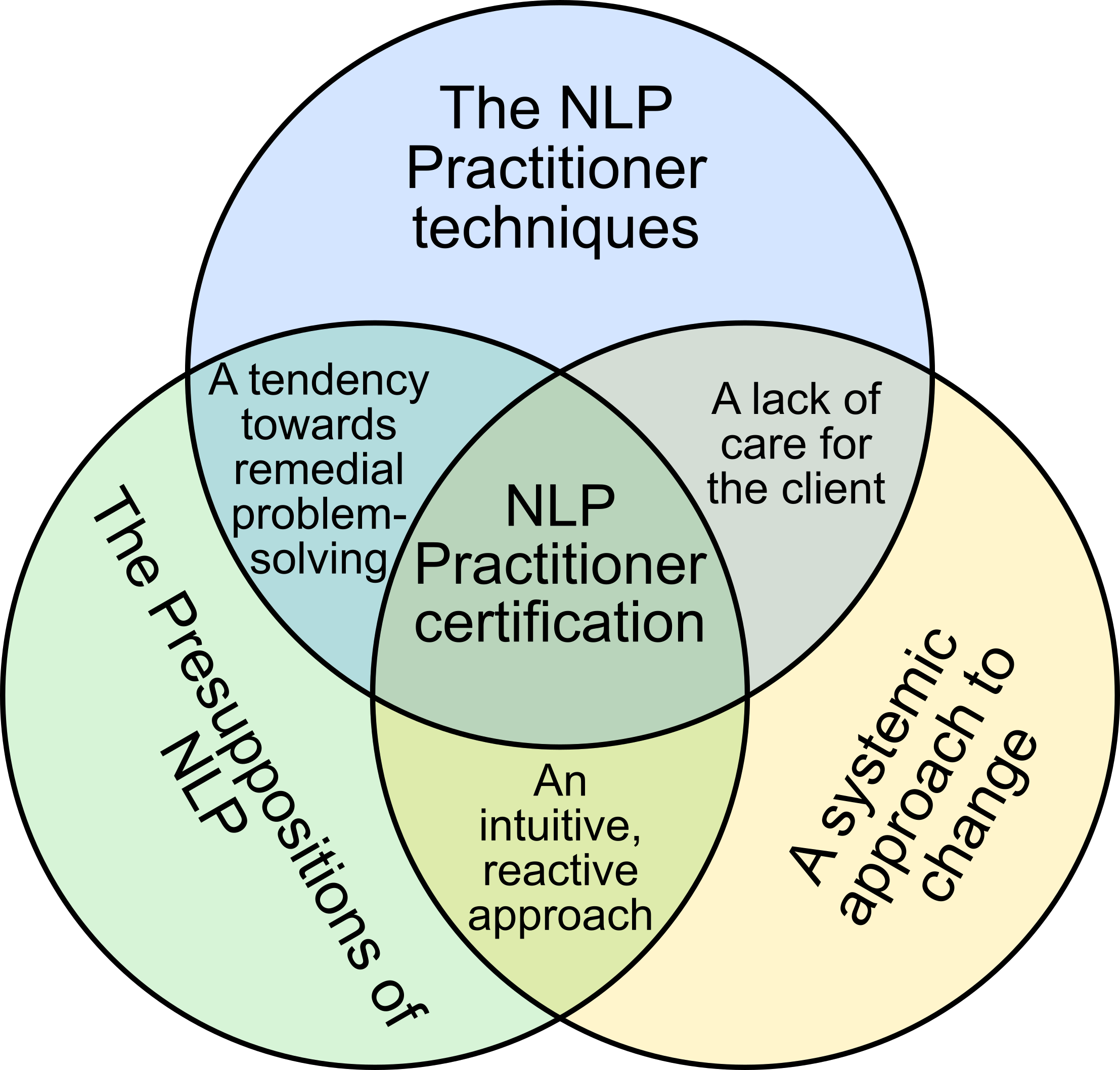SNLP Practitioner training will include assessment for the student which ensures quality and value in the training and is rewarding for the student because the Practitioner certificate is a demonstration of capability and competence, not attendance.
Students should refer to the Presuppositions of NLP when interpreting these criteria. The NLP Trainer should also apply all of the presuppositions in assessing the student.
The set of basic skills of NLP Practitioner competency can be organised as:
- Input Skills (awareness, detection)
- Internal Representation Skills (recognition, processing)
- Behavioural Output Skills (utilisation, implementation)
When giving feedback on a student’s learning progress, the trainer should therefore be able to determine if:
- The student noticed the information
- The student was able to understand or interpret the information within the client’s context
- The student was able to act upon the information in pursuit of the client’s stated outcomes
At the Practitioner level, students should be able to demonstrate a fundamental ability to utilise the basic concepts, skills, processes/techniques and patterns of NLP. NLP represents an approach, an attitude and a methodology supported by a set of operational presuppositions, values and modelling skills that have produced the set of basic techniques and those which have been developed since.
Assessment should be based on output criteria not input criteria. Input criteria would include training duration, format and content. Output criteria can be measured using observed assessments during the training sessions, using theory tests and most importantly with live, observed client sessions after which the student is given specific developmental feedback.
Through the training process, the Trainer should create and guide learning experiences which achieve two aims which can be assessed by comparing the student’s performance at the start and end of the training. Firstly, students should demonstrate competency in applying the techniques of NLP. Secondly, students should demonstrate a change in their own behaviour, in particular greater flexibility in their thinking and their response to external stimuli, demonstrating that the student has actively participated as both student and client and that the student has applied the methodology of NLP to their own experiences.
This diagram shows the three main areas which the Trainer should assess during the training process in order to support an evidence based assessment.
Certain behaviours will be observable if the student has not met the certification standard for example focusing on the problem rather than the client, ‘making it up’ or using techniques from outside of NLP which naturally fall outside of the assessment for NLP Practitioner.
The Trainer will give ongoing feedback throughout the training process and after the final assessment, regardless of its outcome. If a student has not yet met the certification criteria then a plan for reassessment will be agreed.

NLP Trainers are encouraged to maintain an up to date knowledge of current developments in neuroscience which reinforce, advance and in some cases supersede the principles and theories of NLP.
